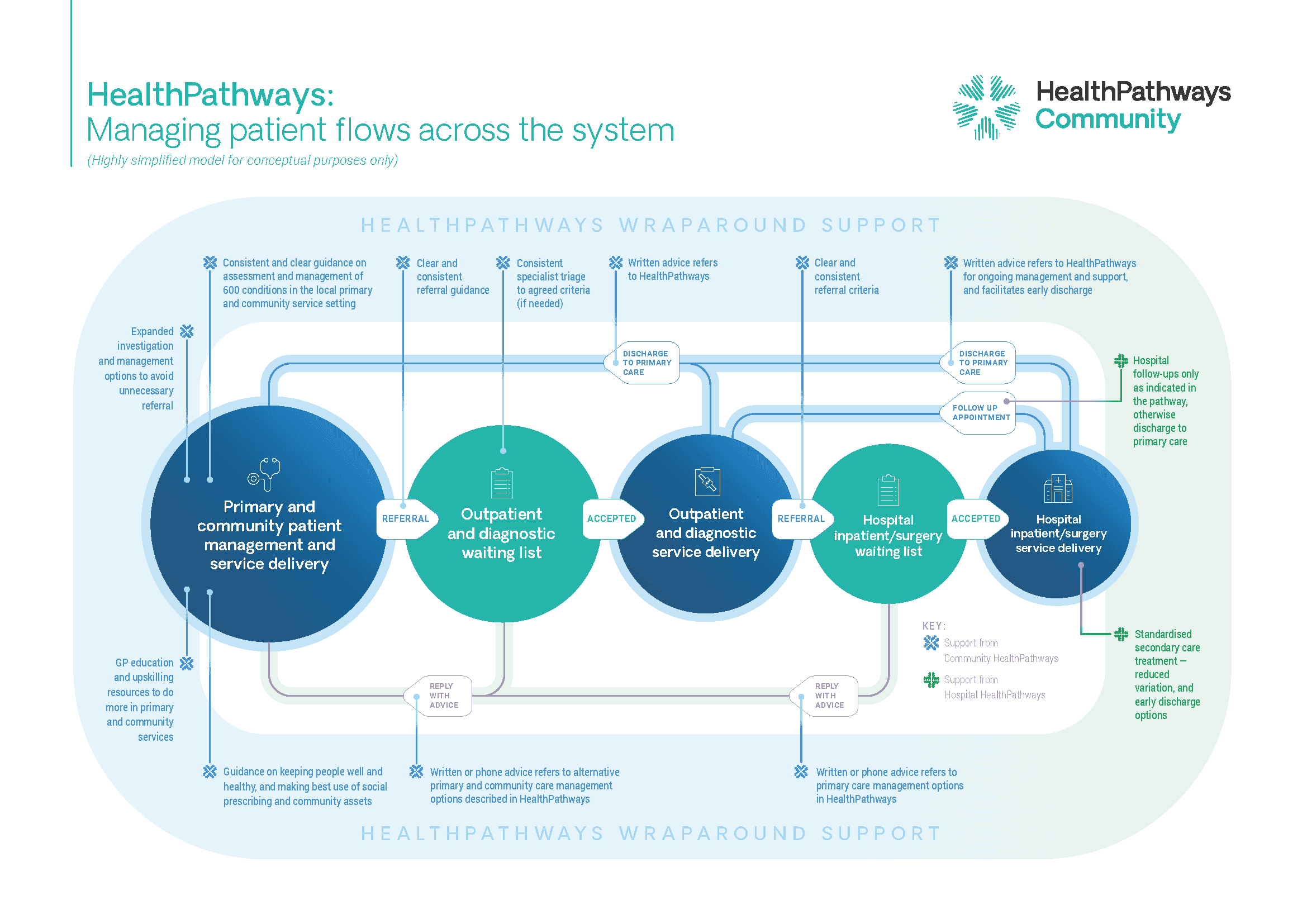HealthPathways
Clinicians train in Patient care, but it’s difficult to keep up with the latest thinking, and navigate a large health system which evolves and changes.

Clinicians train in Patient care, but it’s difficult to keep up with the latest thinking, and navigate a large health system which evolves and changes.
The clinicians in most western health systems are extremely well trained in their chosen specialism, but they work in very complex and rapidly changing environments and are constantly faced with the challenge of keeping up to date with the latest evidence, local protocols, and the availability of local support services.
HealthPathways is an online manual used by clinicians to help make assessment, management, and specialist request decisions. HealthPathways started in Canterbury in 2008, to help primary care clinicians work more effectively with secondary colleagues to support patients with Chronic obstructive pulmonary disease (COPD). It now provides guidance on how to manage over 600 clinical conditions in the local context, with each pathway an agreement between primary and specialist services. It’s used during the consultation with a patient, over 40,000 times a month in Canterbury, 130,000 times a month across New Zealand, and millions of times a year globally.
It’s not just front-line clinicians that like HealthPathways. The funders and managers of health systems like it a lot too because, at a system level, it:
Promotes:
- engagement and agreement between services
- service development, using feedback loops to improve pathways
- improves patient flow through standardised work
- improves referral practice
- provides seamless transition of patients from a community setting to a hospital setting
- provides rapid translation of new evidence and policy into front-line practice.
Reduces:
- unwarranted variation in care
- delays
- unnecessary referrals that waste time and resource
- conflict amongst clinicians about how a patient should be managed.
The success and value of HealthPathways to the Canterbury health system a decade ago didn’t go unnoticed. Before long other health systems in New Zealand and Australia wanted something similar and Streamliners, the provider of the HealthPathways solution, was pleased to help.

By 2015, fifteen Australian and seven NZ health systems had their own versions of HealthPathways and the team at Streamliners saw the opportunity to build a collaborative HealthPathways Community where the members could share their pathway content with each other. This led to a number of efficiencies in developing and maintaining pathways, and the rapid spread of knowledge across the Community about innovative models of care and clinical practice.
By 2021, over fifty health systems caring for 30 million patients relied on HealthPathways to help front-line clinicians make better informed decisions with their patients.
In 2022, the owners of Streamliners transferred 20% of the company shareholding to NZHIH as consideration for the contributions of the Canterbury health system to the HealthPathways concept and much of the original pathway content created all those years ago. NZHIH will benefit from future dividend streams from Streamliners’ international HealthPathways activities, and its Stronger Schools and GPDocs service lines.
Ian Anderson, the co-founder and CEO of Streamliners says “This arrangement with NZHIH fits really well with our goals of keeping Streamliners as a New Zealand based company and helping improve the health and wellbeing of people around the world. Not only will our continued international success provide a dividend flow to help NZHIH support further innovation in the health system, it will also bring the knowledge of best clinical practices from Australia and the UK to our doorstep, and it will employ many more New Zealanders in our knowledge sector.”